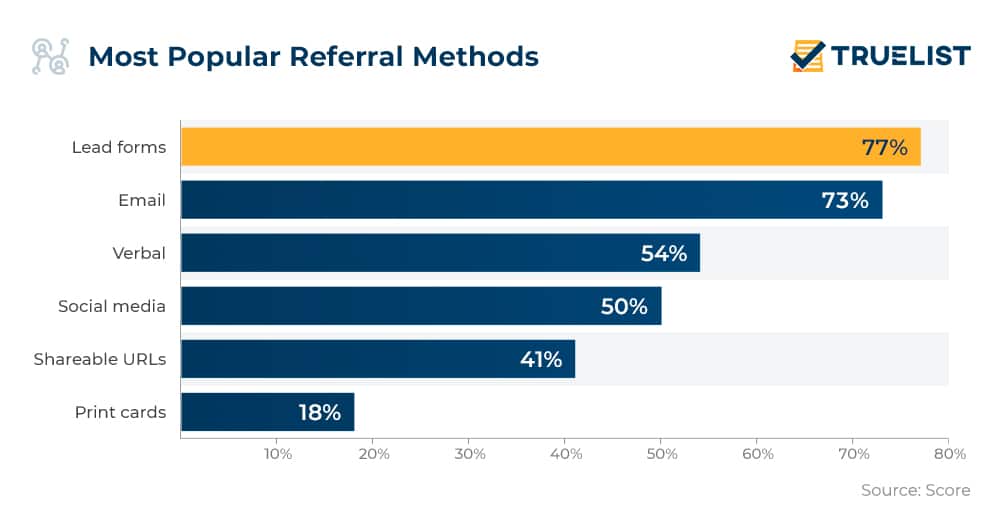The pet treat industry continues to grow at a healthy clip. According to a 2022 report by Grand View Research, the global pet treat market reached $8.12 billion, expanding at a compound annual growth rate (CAGR) of 5.2% from 2023 to 2030. Demand rises for tasty, healthy treats as more households become dog owners.

This presents an exciting opportunity for aspiring entrepreneurs. A homemade or small-batch pet treat business can flourish with careful planning and passion. The initial investment varies depending on factors like equipment needs and distribution plans.
This guide will help you learn how to start a pet treat business. Topics include dog treat business market research, sourcing equipment, registering an EIN, obtaining a business license, forming an LLC, and more.
1. Conduct Pet Treat Market Research
Market research is essential to s

Some details you’ll learn through dog treat bakery market research include:
- Driving increased spending is the humanization of pets by owners who splurge on premium products.
- Treats specifically designed for nutritional support, dental health, hydration, and digestive regularity are in demand.
- The majority of pet owners purchase treats from brick-and-mortar retailers.
- Direct-to-consumer online businesses have an accessible avenue to market.
- With low barriers to entry for baking homemade pet treats, specialty retailers and micro bakeries thrive.
- Ideal customers include the 29% of pet owners who seek out natural, locally sourced pet foods.
- Target marketing to reach wellness-focused consumers with disposable income can yield a loyal customer base.
- Production costs are manageable, as basic kitchen equipment and USDA-approved ingredients suffice initially.
- Funding needs often fall under $10K to get off the ground. Profit margins can stretch up to 45% with efficient processes.
- Key risks center on strict FDA and state regulations for producing consumables.
- Meticulous safety protocols, careful ingredient selection, and explicit labeling are non-negotiable.
- Competitors number over 4,000 just in the U.S., though many have regional vs. national reach.
The sizable year-over-year industry growth, humanization trend, and retail/e-commerce opportunity powerfully position a pet treat startup for prosperity. Lean into premium, natural ingredients, and target-conscious pet lovers for the most lucrative niche.
2. Analyze the Competition
Competitive analysis opens the door to important details about homemade dog treats, selling dog treats in your area, and even where the best locations are to set up a profitable dog treat business. Compare prices, locations, numbers, sales portals, social media preferences, and more.

Some ways to get to know about local homemade dog treat business competitors include:
Search online for local pet treat bakeries and national brands sold nearby. Visit stores carrying pet products to browse in person. Document product variety, pricing, ingredients, health claims, packaging, merchandising, and what sells most. This establishes an overview of the brick-and-mortar landscape.
Research e-commerce. Google key terms like “gourmet dog treats” and “custom cat treats” to find sites selling online. Systematically review the first 5-10 pages of results for e-tailers. Repeat occasionally to monitor new players.
For each competitor, explore their web and social presence for:
- Product lineup and price points
- Ingredient marketing angles (natural, grain-free, organic, etc.)
- Brand personality and messaging
- Customer feedback and reviews
- Online following and engagement
These insights help position a differentiated brand. If competitors overlook senior pets, products tailored to their needs and aging bodies represent an open niche.
3. Costs to Start a Pet Treat Business
When you start a dog treat company, entrepreneurs must determine associated expenses to budget appropriately. This includes both initial investments to establish operations as well as recurring overhead to sustain the business.
Start-up Costs
Expected start-up costs to sell dog treats often fall between $5,000-$10,000. Exact figures vary based on size and capabilities, but typical requirements include:
- Kitchen Equipment – $1,500- $3,000 Ovens, mixers, utensils, baking dog treats sheets, cooling racks, food processors, scales, etc. Those leasing commercial kitchen spaces may utilize equipment already on the premises.
- Ingredients & Packaging – $500 – $1,500 Base ingredients like flour, eggs, and baking soda plus mix-in additions like peanut butter, carrots, and blueberries based on recipe plans. Also jars, bags, boxes, and labels to package finished pet treats.
- Website & Branding -$500 – $1,500 Logo design, branding guide, photography/video for products, set up of e-commerce site to sell homemade dog treats and social media business pages. This assumes a DIY platform for cost savings.
- Permits & Licensing – $50 – $500 Registration of business name plus permits and licenses mandated for pet and/or dog food producers based on location. Requirements vary by state.
- Professional Fees – $500 – $1,500 Lawyers, accountants, and consultants to establish business entities, taxes, and bookkeeping systems.
- Working Capital – $1,000 – $3,000 Reserve funds to cover operating costs like ingredients, utilities, and employee payroll until revenue from sales is realized.
Ongoing Costs
On the recurring expense side, your dog treat bakery business may face costs including:
- Commercial Kitchen Rental – $200-$500 monthly For those not investing in their bakery upfront.
- Ingredients – $500 monthly Costs scale based on production volumes and can become a business’ largest monthly expense.
- Utilities – $100-$300 monthly Electricity, gas, water, garbage used for baking operations and cleaning.
- Online Platform Fees – $50 monthly Subscription costs for e-commerce sites, payment processing, marketing software, etc.
- Labor Costs – $2,500 monthly 1-2 part-time employees or assistants. Could be higher with full production staff.
Along with the above, businesses must factor in costs like insurance, distribution, advertising, accounting services, and other miscellaneous overheads unique to their model. Budgeting approximately $8,000-$12,000 in operating expenses for the first year helps buffer unforeseen costs.
4. Form a Legal Business Entity
When starting a pet treat company, properly establishing the business entity protects personal assets and supports future growth. Sole proprietors hold unlimited liability, while partnerships split liability among a small group. Corporations limit liability but have complex tax and paperwork demands.
Sole Proprietorship
A sole proprietorship offers a simple entity setup for delicious dog treats. However, sole proprietorships take on unlimited liability for business debts and legal issues. Their personal and company assets are the same. This risky exposure makes sole proprietorships ill-advised despite the ease of setup.
Partnership
Partnerships are similar to sole proprietorships but for multiple business owners. They include shared liability and operations among partners, outlined in a partnership agreement. They split profits and liability equally or may allocate differently per partner. There is a more complex dissolution if a partner departs but assets are still at risk.
Limited Liability Company (LLC)
The LLC business structure creates legal protection with less paperwork than a corporation. Pet treat company assets remain separate from personal assets to limit liability. An operating agreement outlines financial and managerial responsibilities. LLCs allow tax flexibility, pass-through income, and easy addition of partners. These features facilitate growth from a small pet treat startup into a thriving commercial bakery.
Corporation
Establishing a C or S corporation creates the highest business liability protection but involves significant legal formalities. Corporations require appointed director(s), ownership shares, annual meetings, and detailed record-keeping. Unless major outside investment is secured or aims to become a national brand, most pet treat businesses need not add this complexity.
5. Register Your Business For Taxes
Unless registering as a sole proprietor using a Social Security Number, pet-treat businesses need an Employer Identification Number (EIN) for federal tax purposes. The EIN also supports opening business bank accounts, applying for licenses/permits, and hiring employees down the road.
Thankfully obtaining an EIN takes just minutes online. Simply:
- Navigate to the IRS EIN Assistant and select Apply Online Now.
- Check the box for View Additional Types, Including Tax-Exempt and Governmental Organizations, and click Apply as a Business.
- Choose the appropriate option that matches your business structure and reasons for needing an EIN. For most pet treat companies, selecting a Sole Proprietor, Corporation, Partnership or Other explains how the EIN will operate a business.
- Follow the short questionnaire providing basic information about the business such as name, address, owners, etc.
- Receive the EIN immediately upon submitting the form.
The EIN application is free and secure. It also streamlines accessing federal tax filing resources tailored to your business needs.
6. Setup Your Accounting
Proper financial tracking transforms chaotic receipts and bank statements into usable data to operate a thriving pet treat business. Investing in accounting software provides automation to simplify recording income and expenses. Supplemented by an accountant’s expertise, business owners gain insights to make smart financial decisions.
Accounting Software
Accounting software like QuickBooks connects to bank accounts and credit cards for easy, accurate transaction logging. Features like invoicing, profit/loss statements, payroll management, and tax preparation integrate into a single dashboard. User-friendly templates require no accounting expertise.
Hire an Accountant
For pet treat businesses, accountants prove invaluable in addressing industry-specific needs like:
- Optimizing cost of goods sold calculations
- Properly tracking ingredient expenses
- Taking vehicle, home office, and equipment deductions
- Tax guidance for hiring employees
During annual tax preparation, accountants ensure all eligible write-offs apply and that no costly errors occur that may spur audits down the road.
Open a Business Bank Account and Credit Card
Separating personal and business finances early on via dedicated business checking/savings accounts and business credit cards simplifies reporting. It also helps demonstrate legitimacy to suppliers when establishing terms. Apply with federal EIN and expected annual revenue. Issuers weigh business vs. personal credit data, affecting approval and credit limits.
7. Obtain Licenses and Permits
Though tempting to dive right into baking irresistible treats, pet entrepreneurs must first navigate requisite registrations. Find federal license information through the U.S. Small Business Administration. The SBA also offers a local search tool for state and city requirements.
Whether operating a commercial-grade bakery or modest home kitchen, state health departments mandate oversight. Applications detail types of pet treats produced, ingredients, equipment used and storage protocols Verify compliance with sanitation, processing, and labeling rules. Fees range from $100-$500+ initially with modest annual renewals.
As with any consumable good, pet treats carry risks should animals become ill. Product liability insurance financially protects against customer lawsuit defense costs and damages should the worst occur. Policies start around $500 annually for $1 million coverage including legal protection. Rates depend on business size and revenue.
Nearly all states require seller’s permits for those operating a retail business, including pet treat producers. Also called a resale certificate/license or sales tax ID, these help states track transaction volumes for sales/use tax purposes. Applications submit anticipated annual revenue, business category, and ownership structure. Fees are typically under $100.
Any facility, including home kitchens, manufacturing, processing, packing, or holding animal food must register with the FDA in the U.S. This supports safety recalls should an issue arise with ingredients/suppliers. The no-cost registration renews biannually with updated contact info and product categories.
8. Get Business Insurance
Even cautious pet treatment enterprises encounter unpredictable risks threatening operations. Business insurance fills crucial financial gaps whether from property damage, inventory spoilage, or customer incidents. Policies cover expenses to reopen after disasters instead of permanent closure.
Without adequate coverage, scenarios that could shutter doors include:
- A fire from faulty appliance wiring destroys the commercial kitchen and all equipment.
- A freezer malfunction during summer heat ruins ingredients and work-in-progress treats before a festival booth.
- A customer’s elderly dog passes after eating new treats; a lawsuit alleges negligence regardless of actual cause.
Thankfully, tailored policies tackle such scenarios so owners focus on baking. Standard coverage includes:
- General liability – property damage/bodily injuries
- Commercial property- buildings, equipment, inventory
- Business income – revenue lost during disruptions
- Commercial auto-vehicle damage and liability
Independent agents simplify securing optimal coverage through multiple insurer quotes after assessing operations. Expect monthly premiums of around $100-$500 for modest pet treat ventures. Explore options as soon as possible after opening both for peace of mind and regulatory compliance.
9. Create an Office Space
As pet treat operations grow, an office lends professionalism to client meetings and administrative tasks separate from noisy production floors. Home offices offer affordability starting while retail spaces provide customer visibility if selling directly.
Home Office
Initially working from a spare room or finished basement keeps costs nil, provided space exists. Utilize household furniture and supplies with the addition of any special equipment like shipping printers. Deduct a percentage of household utility bills tied to business use for tax savings.
Coworking Space
Leasing a semi-private desk in a shared coworking environment like WeWork grants professional meeting space from $300-$500 monthly. Networking with other entrepreneurs proves invaluable. Amenities like WiFi, printers, conference rooms, and front desk staff create a polished home base for small teams.
Retail Shop
For pet treat businesses operating a storefront, claiming onsite office space Visible behind shop windows signals an established local presence to patrons. Renting 100-200 square feet fits a desk and sitting area to handle paperwork, phone consultations, and meetings. Costs range from $12-$25 per square foot.
Commercial Office
Leasing modest private office space in a business complex keeps manufacturing and administrative teams separate. Expect stale warehouse spaces to convert to trendy offices with lots of natural light and ventilation. Prices run $15-$30 per square foot in desirable complexes with parking.
Evaluate needs, culture, and stage of business to select suitable offices that project success.
10. Source Your Equipment
From ovens to mixers, securing necessary equipment helps pet treat bakers thrive. Balancing affordability and functionality determines whether buying new, going used, renting or leasing works best per item.
Buying New
Specialty retailers like Webstaurant Store offer commercial-grade equipment for wholesale prices of 20-40% under MSRP without volume discounts. Investing in new stainless steel appliances built to endure and deliver reliability.
Buying Used
Major savings arise when purchasing quality used equipment from commercial kitchen supply stores, auction sites like BidSpotter, and online platforms such as Facebook Marketplace and Craigslist. Be ready to thoroughly inspect and transport large purchases.
Renting
Large batch jobs for retailers justify renting an industrial mixer or steam kettle for the weekend. Event equipment rentals deliver and retrieve heavy machinery starting at $100 daily. Useful for short-term needs outstripping current equipment.
Leasing
Committing to monthly payments allows bakers to use equipment like a commercial freezer or delivery vehicle without huge upfront costs. This bridges the gap for those not yet ready for new purchases. Leasing plans range from 24-60 months with buyout options.
11. Establish Your Brand Assets
A thoughtful brand identity attracts ideal customers who resonate with the vision and quality promised. Investing in professional assets like logos, websites, and signage also builds credibility with retailers interested in wholesaling homemade treats.
Getting a Business Phone Number
A custom business phone number via providers like RingCentral enables personalized voicemail greetings and seamless call routing between departments. Choose local area codes to connect with regional customers.
Creating a Logo and Brand Assets
A logo encapsulates the pet treat brand personality while color schemes, fonts, and graphic elements comprise a cohesive visual brand. When designed professionally using online logo makers like Looka, digital, print, and packaging display consistency that customers remember.
Creating Business Cards and Signage
Business card exchanges build local networks while branded signage like banners grabs event booth attention. Use online printers like Vistaprint for high-quality cards showcasing the logo, social media handles, and custom treat packaging.
Purchasing a Domain Name
Secure website real estate with a domain Namecheap matching the business name or core products like tastytreats.com.
Building a Website
An informational website is vital for sharing ingredients, ethos, and online ordering options. Those without web design expertise can choose user-friendly DIY website builders like Wix with template guidance. Otherwise, consider hiring web developers on freelance marketplaces like Fiverr for custom sites. Optimized sites drive sales 24/7/365.
12. Join Associations and Groups
While recipe testing and branding establish the business foundation, networking builds crucial community ties. Local pet associations, meetups, and Facebook groups provide camaraderie, advice, and potential partnerships that amplify success.
Local Associations
Industry-specific groups like the American Pet Products Association and Pet Food Institute offer mentorship programs to advise startups as well as annual conferences to showcase products. More localized clubs like Columbus Dog Connection connect neighborhood pet lovers through events and help circulate brand awareness.
Local Meetups
Attend area Meetup groups for pet retailers and pet service companies to put treats directly into shop owners’ hands. Bring samples to holiday bazaar vendor mixers to get buyer feedback and gauge wholesale interest. These in-person gatherings build local networks to fuel regional sales.
Facebook Groups
Nationwide niche communities provide support no matter where based. The Pet Business Marketing Support Group and Pet Business All-Stars: Dog walkers, daycares, groomers, and trainers share industry challenges, solutions, and inspiration with fellow artisans. These multi-member groups lead to website traffic, product interest, and new product ideas through real-time conversations.
13. How to Market a Pet Treat Business
While baking irresistible recipes puts smiles on puppy faces, strategic marketing puts treats into more paws by raising awareness. As an intimate business, word-of-mouth referrals from delighted pet parents provide the most meaningful growth. However, augmenting personal connections through digital and traditional promotions expands reach exponentially.

Referral Marketing
The most cost-effective tactic early on is incentivizing existing customers to endorse the brand on social media and to friends for rewards like free-treat samples. Small gestures gain authentic peer influencers. Referral marketing is useful in the early stages of a new pet treat business.
Digital Marketing
- Run Google and Facebook ads promoting seasonal ingredients like pumpkin or peanut butter. Target by geography and pet owner demographics.
- Launch YouTube baking tutorial videos to showcase the processes and personality behind the treats.
- Blog about new product launches, health-conscious ingredients, and pet owner stories to boost SEO and traffic.
- Send email newsletters with exclusive subscriber sales or recipe reveals to nurture leads. Offer opt-in incentives.
- Sponsor pet influencer Instagram shoutouts to tap into their engaged following.
- List specialty holiday gift boxes on platforms like Etsy for niche exposure.
Traditional Marketing
- Distribute free samples and coupons at dog parks, vet offices, and pet stores.
- Advertise in regional pet care magazines and specialty breed digests.
- Display custom banners at weekend adoption fairs and busy pet stores.
- Run punchy radio spots on local pet-focused talk shows.
- Print bold flyers for community center announcement boards.
As with any small business, pinpointing the most effective strategies takes testing across both digital and tangible channels. Frequently engage social media followers and email subscribers to continually hone messaging and offers based on feedback. Provide consistent value and the community will eagerly fuel referrals.
14. Focus on the Customer
While marketing and advertising introduce potential customers to homemade pet treats, consistently exceptional service earns their loyalty and word-of-mouth referrals. In an intimate business fueled by fur baby health, pet parent trust makes or breaks the brand.
Responding promptly to questions and feedback shows customers their voice matters. When tweaking recipes or designing gift baskets, regularly seek input through surveys and conversations to meet evolving needs.
Addressing product issues swiftly also maintains goodwill. Should a pet become ill, communicate openly with veterinarians to determine if treats were a factor. Provide refunds and well wishes to struggling pet families, even if treats were likely not the culprit. This compassion and accountability are remembered.
Share glowing testimonials and pictures on social media of pets enjoying treats with thanks tagged to their pet parents. This recognition energizes them to spread brand awareness across their networks.
In niche markets like pet care, reputations carry. When businesses personally engage customers as valued individuals instead of transactions, affection for the brand blossoms. With consumers increasingly buying based on company values over convenience or cost, customer service directly fuels growth.
